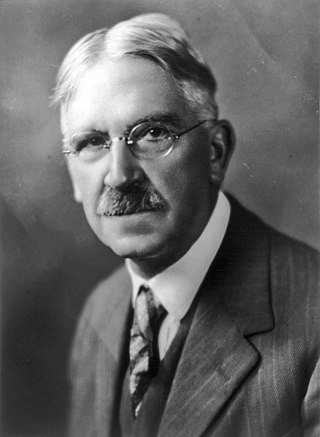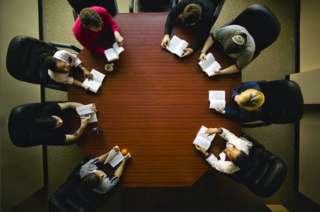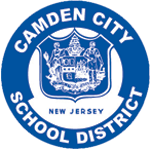Progressive education, or educational progressivism, is a pedagogical movement that began in the late 19th century and has persisted in various forms to the present. In Europe, progressive education took the form of the New Education Movement. The term progressive was engaged to distinguish this education from the traditional curricula of the 19th century, which was rooted in classical preparation for the early-industrial university and strongly differentiated by social class. By contrast, progressive education finds its roots in modern, post-industrial experience. Most progressive education programs have these qualities in common:

John Dewey was an American philosopher, psychologist, and educational reformer. He was one of the most prominent American scholars in the first half of the twentieth century.

The Metropolitan Archdiocese of Philadelphia is a Latin Church ecclesiastical territory, or diocese, of the Catholic Church in southeastern Pennsylvania in the United States.

The University of Chicago Laboratory Schools is a private, co-educational, day Pre-school and K-12 school in Chicago, Illinois. It is affiliated with the University of Chicago. Almost half of the students have a parent who is on the faculty or staff of the university.

Democratic education is a type of formal education that is organized democratically, so that students can manage their own learning and participate in the governance of their educational environment. Democratic education is often specifically emancipatory, with the students' voices being equal to the teachers'.
Constructivist teaching is based on constructivism. Constructivist teaching is based on the belief that learning occurs as learners are actively involved in a process of meaning and knowledge construction as opposed to passively receiving information.

Ella Flagg Young was an American educator who served as superintendent of Chicago Public Schools. She was the first female head of a large United States city school system. She also served as the first female president of the National Education Association.
The Monroe Township Public Schools is a comprehensive public school district serving the educational needs of students in pre-kindergarten through twelfth grade from Monroe Township, in Gloucester County, in the U.S. state of New Jersey. Services are also provided for preschool handicapped students as well as other students with special needs.

Camden City School District is a public school district that serves students in pre-Kindergarten through twelfth grade from the city of Camden, in Camden County, in the U.S. state of New Jersey. The district is one of 31 former Abbott districts statewide that were established pursuant to the decision by the New Jersey Supreme Court in Abbott v. Burke which are now referred to as "SDA Districts" based on the requirement for the state to cover all costs for school building and renovation projects in these districts under the supervision of the New Jersey Schools Development Authority. In 2013, after years of requests from local officials, New Jersey intervened in Camden City, making the school district state-run under the leadership of Superintendent Paymon Rouhanifard.

Pemberton Township School District is a comprehensive community public school district headquartered in Pemberton Township, in the U.S. state of New Jersey, serving students in pre-kindergarten through twelfth grade. The district is one of 31 former Abbott districts statewide that were established pursuant to the decision by the New Jersey Supreme Court in Abbott v. Burke which are now referred to as "SDA Districts" based on the requirement for the state to cover all costs for school building and renovation projects in these districts under the supervision of the New Jersey Schools Development Authority. The school district serves Pemberton Township along with Pemberton Borough.
The Crefeld School is an alternative school for students in grades seven through twelve in Chestnut Hill, Philadelphia. The Crefeld School is home to The Crefeld glass studio.
The Collingswood Public Schools is a comprehensive community public school district that serves students in pre-kindergarten through twelfth grade from Collingswood, in Camden County, in the U.S. state of New Jersey.

William Heard Kilpatrick was an American pedagogue and a pupil, a colleague and a successor of John Dewey. Kilpatrick was a major figure in the progressive education movement of the early 20th century.

The Avery Coonley School (ACS), commonly called Avery Coonley, is an independent, coeducational day school serving academically gifted students in preschool through eighth grade (approximately ages 3 to 14), and is located in Downers Grove, DuPage County, Illinois. The school was founded in 1906 to promote the progressive educational theories developed by John Dewey and other turn-of-the-20th-century philosophers, and was a nationally recognized model for progressive education well into the 1940s. From 1943 to 1965, Avery Coonley was part of the National College of Education (now National Louis University), serving as a living laboratory for teacher training.
There are numerous elementary, secondary, and higher institutions of learning in the Commonwealth of Pennsylvania, which is home to 500 public school districts, thousands of private schools, many publicly funded colleges and universities, and over 100 private institutions of higher education.

Moore College of Art & Design is a private art school in Philadelphia, Pennsylvania. It was founded in 1848 by Sarah Worthington Peter as the Philadelphia School of Design for Women, and was renamed the Moore College of Art & Design in 1989. Although the school's undergraduate programs were historically only open to women, Moore opened admission to transgender, nonbinary, and gender-nonconforming students in 2020. Its other educational programs, including graduate programs and youth programs, are co-educational.
Waldron Mercy Academy is a private K-8 Catholic elementary school sponsored by the Sisters of Mercy and located in the Archdiocese of Philadelphia in Merion, Pennsylvania. The school is accredited by the Middle States Association of Colleges and Schools and has twice won National Blue Ribbon School recognition from the United States Department of Education.

In the United States, elementary schools are the main point of delivery of primary education, for children between the ages of 4–11 and coming between pre-kindergarten and secondary education.

Henry Washington Sawyer III was an American lawyer, civil rights activist and politician. Born in Philadelphia, he served in the U.S. Navy in World War II, afterwards returning to the University of Pennsylvania Law School. Sawyer worked as a corporate lawyer but is best known for his advocacy of civil liberties, especially in First Amendment cases. In Abington School District v. Schempp and Lemon v. Kurtzman, he successfully argued cases on behalf of the American Civil Liberties Union before the Supreme Court of the United States that became the basis for all modern Establishment Clause jurisprudence. Sawyer also pursued civil rights causes in Philadelphia and in the South during the civil rights movement of the 1960s. Originally a Republican, he was elected as a Democrat to serve a four-year term on the Philadelphia City Council, where he worked for civil service reform and to increase the amount of public art in the city.
Florence Eilau Bamberger was an American pedagogue, school supervisor, progressive education advocate, and author. Influenced by the ideas of John Dewey, she researched, lectured, and wrote extensively on the concept of child-centered education. She spent most of her career as a professor of education in the department of philosophy at Johns Hopkins University, and was the first woman to attain a full professorship at that university. From 1937 to 1947 she served as director of Johns Hopkins' College for Teachers. After her retirement, she taught in private elementary schools in Baltimore, Maryland.














